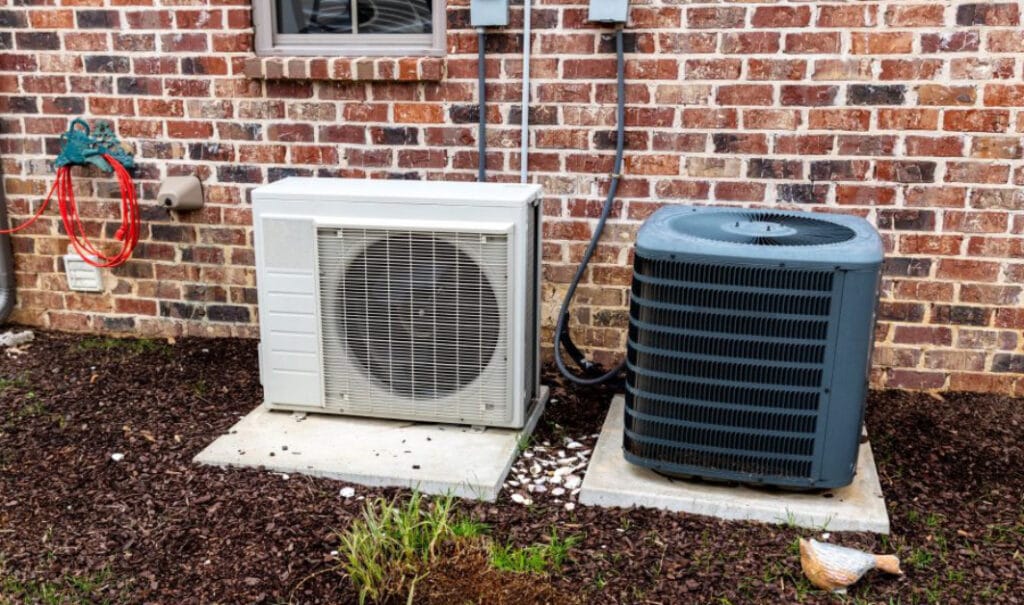
4 Considerations to Expect During the HVAC Installation Process
As a homeowner, you want to ensure that your air conditioning installation is completed correctly to avoid costly repairs or replacements down the road. The Environmental Protection Agency recommends that your AC filters function at 35% to 80% efficiency for dust spots. To ensure the lifetime and best performance of your air conditioning installation, consider the four aspects listed below.
1. Get your Home Ready
You can do numerous tasks before the installation personnel arrives to help with the procedure. Move valuable things, such as antiques and priceless keepsakes, to a secure area away from the installation site.
New HVAC System Cost in Sacramento For 2025 – Southport
Airing Out Your Home: How Often Is Best in 2025?
They may feel uneasy if requested to move delicate goods since they do not want to be held responsible for an accident. If you have pets or small children, keep them away from the installation site.
This preparation can help speed up the installation procedure. It is best to cover your heavy furniture and other objects that technicians cannot move with a dust cover during installation to prevent dust buildup.
2. The Right Size
One of the most crucial aspects of a good air conditioning installation is selecting the appropriate unit size for your home. If your AC unit is too tiny, it will have to work extra to cool your home, resulting in higher energy bills and a shorter lifespan for the unit. However, if your unit is too large, it may cool your home too quickly, resulting in inefficient operation and excess moisture in the air.
3. The Right Insulation
Your home should be correctly insulated prior to build. If your home is not effectively insulated, heat will be able to enter, making it more difficult for your air conditioner to keep each area cool. This will result in higher energy costs and lower efficiency of your device. Proper insulation helps keep cool air in and warm air out, making your air conditioner’s job much easier.
4. The Right Location
The location of your HVAC unit is also critical to its efficiency. If your unit is positioned in an area that receives direct sunlight or in a small space, it will work more to chill your home. Look for a shady spot with lots of space for air movement.
After you’ve completed the estimate and picked an HVAC contractor and new system based on their suggestions, you’re ready to begin installation.
When an HVAC professional arrives, he or she will survey the construction site and begin preparing their workspace. Before installing a new HVAC system, the technician must first replace the old equipment with the new air conditioner and heating unit. This process may require access to the HVAC system in attics, crawl spaces, and basements.

After turning off the electricity to the HVAC unit, the contractor drains any old refrigerant from the AC system and disassembles and removes the old equipment. The installation crew will start by replacing the old equipment with your new air conditioner and heating unit. They will turn off the electricity to the old HVAC unit, drain the refrigerant, and disassemble and remove the old equipment.
To safeguard the floor, the technician will lay down drop cloths and protective paper. They should also relocate household items near work areas to a secure location that is out of the way. Because the installation may generate dust, large furniture and other home goods that cannot be moved should be wrapped in plastic for protection. After confirming that all flooring and household goods are protected, the crew will gather their gear and begin the project.
While professionals can accomplish most HVAC system replacements in one day, the installation procedure may take longer.
Depending on your HVAC requirements, you may need to repair or replace your ducting. Assume that your HVAC project requires extensive ductwork. In that instance, crew workers will work in attics and crawl spaces to repair or modify as needed. Major ducting repairs may prolong the completion of the HVAC replacement.
After the repair, the installation will commence. Depending on the kind of the system you choose, you can install the equipment both inside and outside your home. Components could include:
- The AC unit.
- The evaporator.
- The outside compressor.
- The condensing unit.
- The refrigerant supply lines.
- The thermostat.
- The condensate drain lines.
- The condensate pump
When we install a new HVAC system in your house, we make sure to evaluate all locations that may effect the installation. This includes inspecting any pipes that may require repair following the installation process and before using the new system. Our goal is to ensure that everything is in top working order so that your new HVAC system can run smoothly.
However, it’s crucial to note that the installation may necessitate unforeseen repairs. These may involve replacing faulty ductwork, decaying wall studs, electrical upgrades, and drywall repairs that were not included in the first quote. While we make every effort to address all potential difficulties in the first estimate, certain issues can only be detected once the project has begun.
At Southport Heating and Air, we believe in transparency and reliability. Trust us to handle your HVAC installation with the utmost care and professionalism, ensuring your home remains comfortable and safe.

